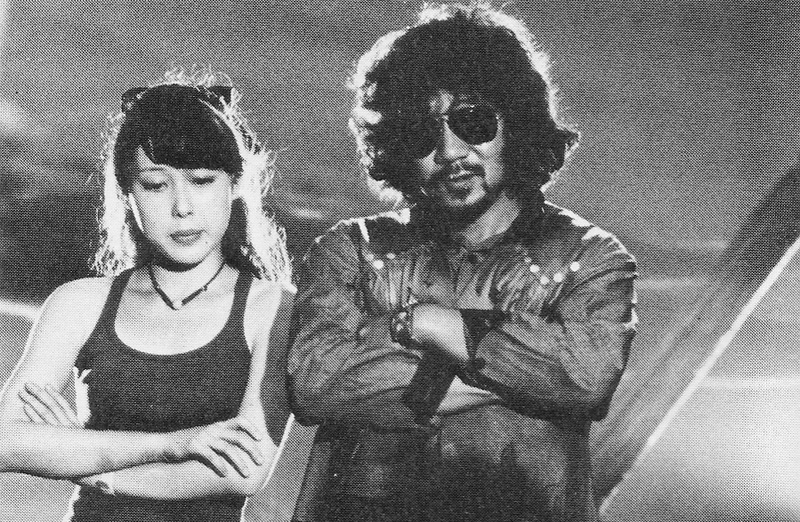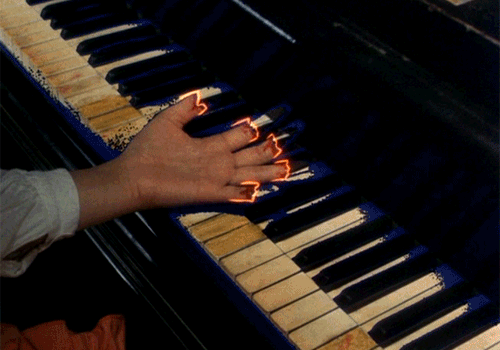Heart of Weirdness: The Story Behind HAUSU

HAUSU screens at AFS Cinema in 35mm through October 31st. Get tickets.
It’s hard to imagine the making of HAUSU; it might be easier to write it off as having arrived from some distant dimension. Leading up to the ’70s, HAUSU producer Toho Studios was one of the major Japanese movie studios. They had spawned many of Akira Kurosawa’s films (including IKIRU, SEVEN SAMURAI, THE HIDDEN FORTRESS, and HIGH AND LOW) as well as the original GODZILLA. But, by the ’70s, audiences had lost interest in samurai and kaiju genres. The very unusual and visually unique HAUSU surprised the Toho executives, scoring a much larger youth audience than they ever expected.
Okay, Toho Studios released HAUSU. But who made the film?
HAUSU’s director, Nobuhiko Obayashi, was born in 1938 in Onomichi, a city in the Hiroshima prefecture. His first experience with film was at three years old, when he mistook a film projector for a train toy. After innocently cranking the handle, the still images projected on the wall suddenly came to life.

Despite being pressured to become a doctor by his father, Obayashi instead enrolled at Seijo University. There he began experimenting with film. By the 1960’s he was well established in the experimental film scene, was a member of the Japan Filmmaker’s Cooperative, and was screening his work regularly with the Art Theater Guild. Obayashi and his contemporaries in the experimental 8mm format would put on screenings at universities and makeshift venues around Tokyo to get their work seen. At the same time, Obayashi was creating short advertisements independently for small businesses, as a means to support himself and his artistic endeavors. Obayashi would go on to work with Dentsu, Japan’s largest advertising firm, creating over 2000 commercials including this deodorant spot with Charles Bronson.
Hot off his success in the commercial world, studio heads urged Obayashi to develop a concept for a feature film. Rather than write a screenplay on his own, Obayashi took a curious route: he asked his 11-year-old daughter, Chigumi, what she found scary.
She described a fear that her reflection in the mirror might reach out and eat her.

She told him about how after piano practice, her fingers would hurt, as if the piano was chewing on her.

Obayashi bounced ideas off of Chigumi, took her ideas, and came up with the concept of a house devouring its inhabitants. He presented the treatment to Isao Matsuoka, the Vice-President of Toho. Matsuoka didn’t understand the story, but was willing to take a chance on something unique regardless. He soft-greenlit the film and went about searching for a director, which couldn’t have been Obayashi, due to strict house rules regarding how directors were appointed at the time.
While Toho searched for the director, Obayashi took the role of marketing the film into this own hands. He convinced press to mention the film in articles. He convinced Weekly Shonen Magazine to create a HAUSU manga (and eventually a novelization of the screenplay). He made HAUSU bumper stickers and postcards. In November of 1976, there was even a radio adaptation of HAUSU. Impressed by his unending loyalty to the project, Toho would eventually change their mind and hire Obayashi to direct the film.
The rest is history, and HAUSU remains a potent combination of elements. Instead of ditching his past, Obayashi took an everything-including-the-kitchen-sink approach to the film. He tried to involve as many of his friends from the underground as possible in the process, enlisting then-relative-unknowns Godiego for the poppy soundtrack, with his friend Asei Kobayashi producing (and also starring as the watermelon man). Instead of reinventing his style, he synthesized it: he adapted his unique visual and temporal language developed in his experimental years, along with the artifice and condensation of his advertising work. In a proto-post-modern fashion, he played with well-worn Japanese archetypes as a foundation to jump off from stylistically, as Chuck Stevens from Criterion delves into wonderfully. What his native audiences immediately read as tongue-and-cheek only adds to the strangeness of watching the film as an outsider.
Beyond its glitz and silliness, we can read HAUSU in a number of ways. Just as its teenage protagonists are at a turning point between childhood and adulthood, HAUSU exists at many crossroads: between animation and live-action; between horror and comedy. Obayashi’s generation was one living with memories of the atomic bomb, and his daughter’s generation was the first to be lucky enough to come of age without them. He was likely torn: to remind his kin about the horrors of the past, or let her live unburdened by them? It is this central anxiety that the film’s horrors spew from, as the aunt’s husband died in the war, leaving an empty house filled with evils.
Apart from more subjective interpretations, HAUSU will always be perplexing, overwhelming, and a document of a father’s love for his daughter.
Check out Obayashi’s short film, EMOTION, below:
- Contributed by Henry Graham










